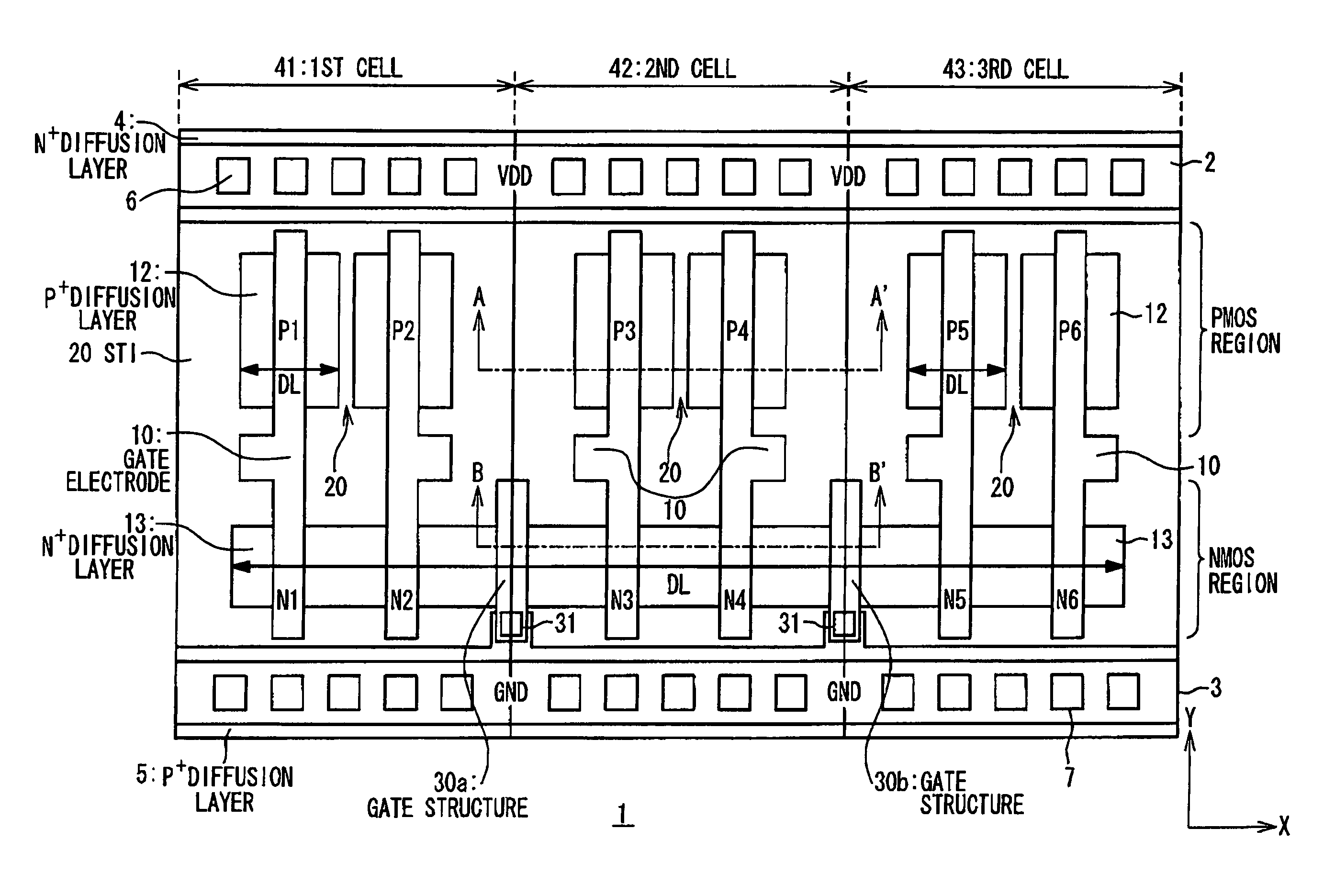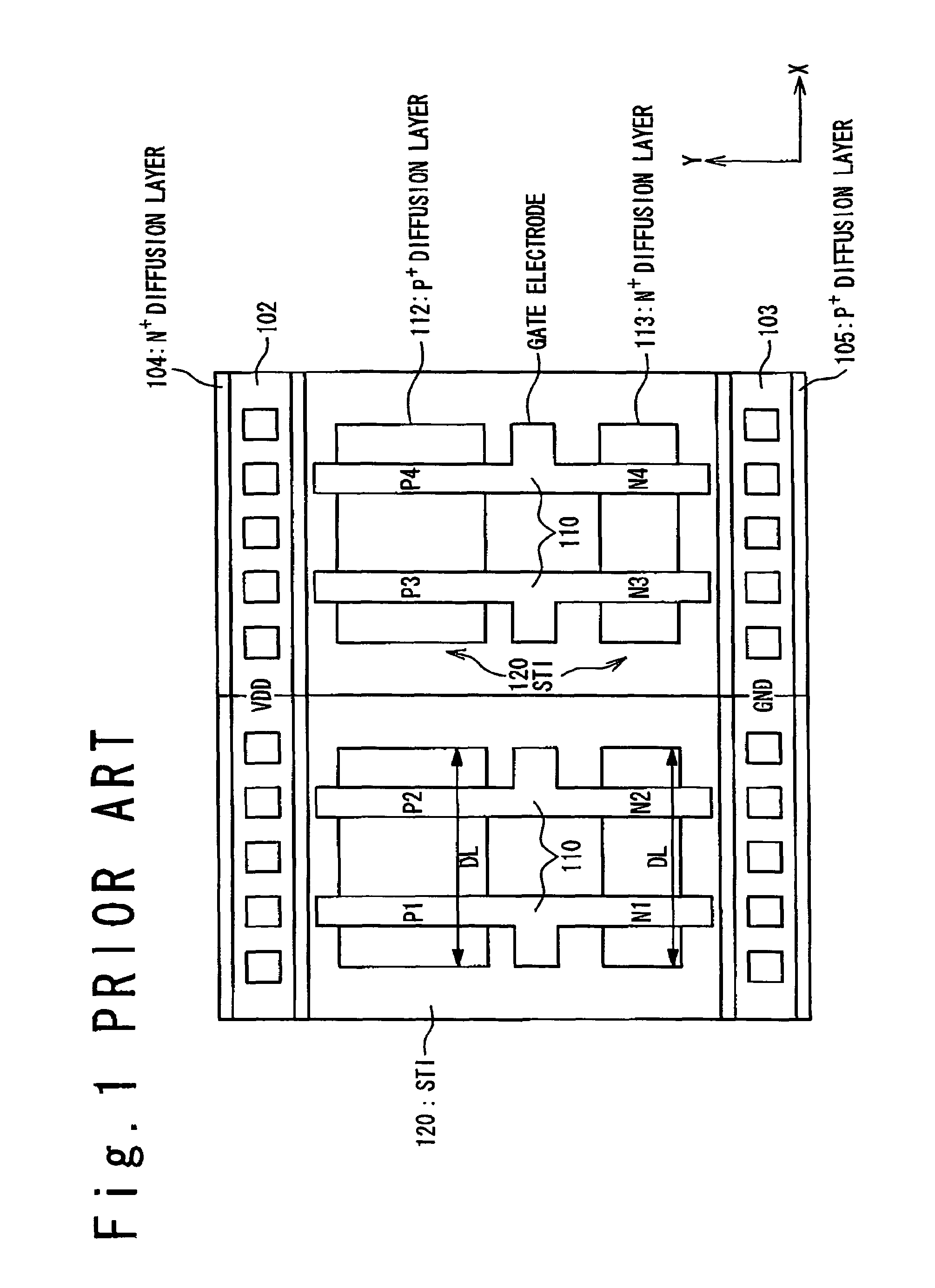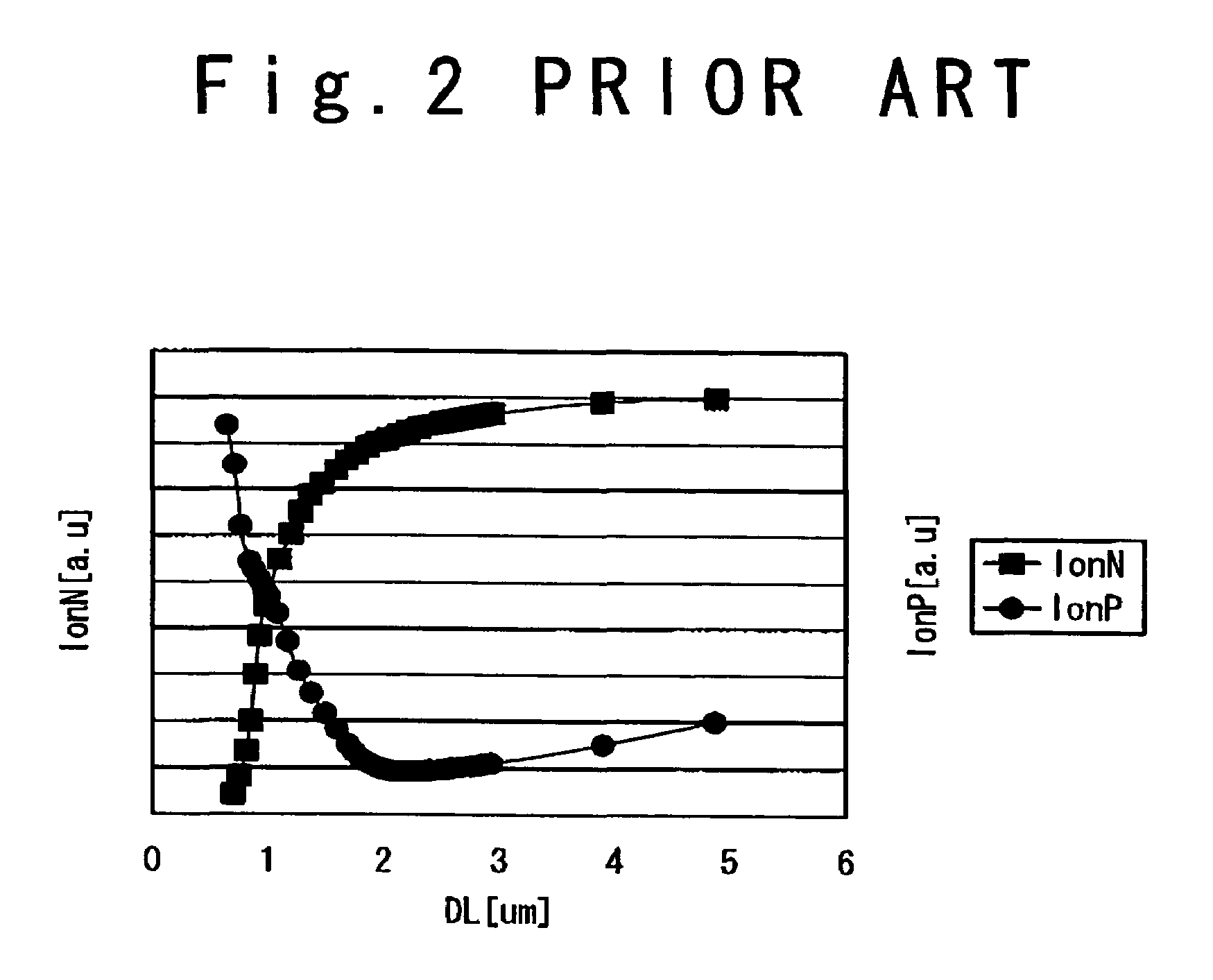Semiconductor device with NMOS transistors arranged continuously
a technology of nmos transistors and semiconductor devices, which is applied in the direction of semiconductor devices, transistors, electrical equipment, etc., can solve the problems of not being able to use a desired number of nmos transistors among many nmos transistors, and not being able to isolate a desired number of elements,
- Summary
- Abstract
- Description
- Claims
- Application Information
AI Technical Summary
Problems solved by technology
Method used
Image
Examples
first embodiment
[0040]FIG. 3 is a plan view showing a pattern structure of a semiconductor device 1 according to the first embodiment of the present invention. Referring to FIG. 3, a power supply line 2 for supplying a power supply voltage VDD and a ground line 3 for supplying a ground voltage GND are arranged to extend in an X-direction. The power supply line 2 is connected to an N-type diffusion layer 4 via contacts 6 to apply a power supply voltage as a substrate voltage. Further, the ground line 3 is connected to a P-type diffusion layer 5 via contacts 7 to apply a ground voltage as the substrate voltage. A plurality of PMOS transistors P1 to P6 and a plurality of NMOS transistors N1 to N6 are formed in a region put between the power supply line 2 and the ground line 3. Specifically, the plurality of PMOS transistors P1 to P6 are formed in a PMOS region to be aligned with each other along an X-direction. Also, the plurality of NMOS transistors N1 to N6 are formed in a NMOS region to be aligned ...
second embodiment
[0049]The semiconductor device 1 according to the present invention can be designed by cell-base technique and manufactured. For example, the structure shown in FIG. 3 can be realized by a combination of a first cell 41, a second cell 42 and a third cell 43. The first cell 41 includes PMOS transistors P1 and P2, NMOS transistors N1 and N2 and half of the gate structure 30a. The second cell 42 includes PMOS transistors P3 and P4, NMOS transistors N3 and N4, half of the gate structure 30a and half of the gate structure 30b. The third cell 43 includes PMOS transistors P5 and P6, NMOS transistors N5 and N6 and half of the gate structure 30b. The first cell 41 and the second cell 42 are arranged so that the gate structure 30a is formed when they are adjacent to each other. Further, the second cell 42 and the third cell 43 are arranged so that the gate structure 30b is formed when they are adjacent to each other.
[0050]Further, the semiconductor device 1 according to the present invention ...
third embodiment
[0058]FIG. 8A shows an example of wirings to be used for the structure of inverters as the semiconductor device according to the third embodiment of the present invention. A source of the PMOS transistor P1 is connected to a power supply line by a wiring 61. A source of the PMOS transistor P2 is connected to the power supply line by a wiring 62. A source of the NMOS transistor N1 is connected to a ground line by a wiring 63. A source of the NMOS transistor N2 is connected to the ground line by a wiring 64. A drain of the PMOS transistor P1 is connected to a drain of the NMOS transistor N1 by a wiring 65. A drain of the PMOS transistor P2 is connected to a drain of the NMOS transistor N2 by a wiring 66. Further, the wiring 65 and the wiring 66 are connected to each other. Further, a gate electrode 10-1 of the PMOS transistor P1 and the NMOS transistor N1, and a gate electrode 10-2 of the PMOS transistor P2 and the NMOS transistor N2 are connected via a wiring 67. With this configurat...
PUM
 Login to View More
Login to View More Abstract
Description
Claims
Application Information
 Login to View More
Login to View More - R&D
- Intellectual Property
- Life Sciences
- Materials
- Tech Scout
- Unparalleled Data Quality
- Higher Quality Content
- 60% Fewer Hallucinations
Browse by: Latest US Patents, China's latest patents, Technical Efficacy Thesaurus, Application Domain, Technology Topic, Popular Technical Reports.
© 2025 PatSnap. All rights reserved.Legal|Privacy policy|Modern Slavery Act Transparency Statement|Sitemap|About US| Contact US: help@patsnap.com



